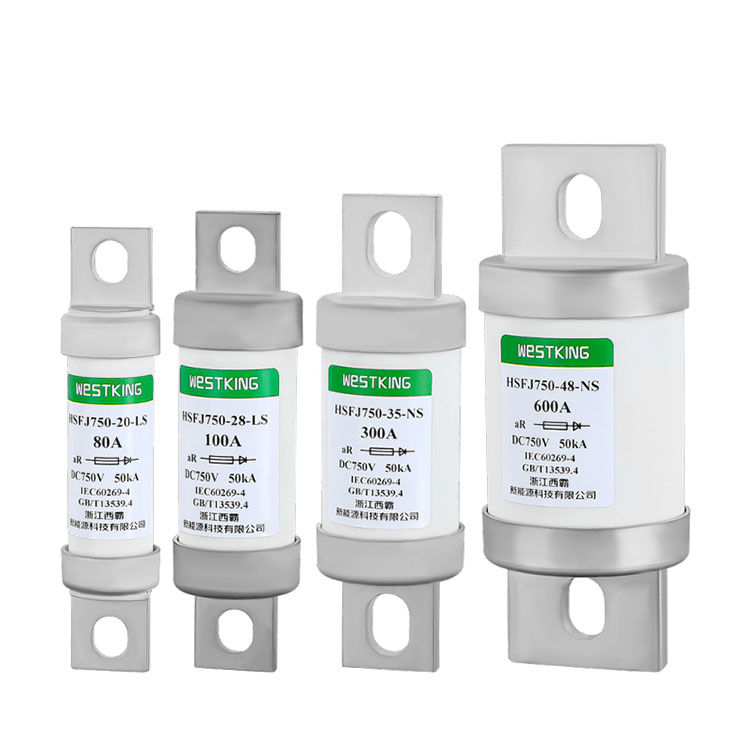Applications of High-Speed Fuses
2024-06-05
A high-speed fuse is a type of electrical protection device designed to protect sensitive equipment, particularly in power electronics applications, from overcurrent conditions such as short circuits. These fuses operate very quickly to interrupt the circuit, thereby minimizing the damage to the equipment and ensuring safety.
Key Features:
1. Fast Acting:
- Quick Response: High-speed fuses are designed to respond rapidly to overcurrent conditions, significantly faster than standard fuses. This rapid response helps protect sensitive electronic components from damage.
2. High Current Interrupting Capacity:
- Handling High Currents: They can interrupt high fault currents without allowing significant current to pass through, thus protecting the circuit.
3. Construction:
- Materials: Typically made from materials such as silver, copper, or a combination of metals to ensure efficient and reliable performance.
- Design: Often have a specialized construction with a fuse element housed within a ceramic or glass body to withstand high thermal and mechanical stress.
4. Voltage Rating:
- Wide Range: Available in various voltage ratings to suit different applications, from low voltage (LV) to high voltage (HV) systems.
5. Application Specific:
- Tailored Designs: Some high-speed fuses are designed specifically for certain applications, such as semiconductor protection, inverter circuits, and DC systems.
Applications:
1. Power Electronics:
- Semiconductor Protection: Widely used to protect semiconductors like diodes, thyristors, and transistors in power converters, inverters, and other electronic devices.
- Variable Frequency Drives (VFDs): Essential for protecting VFDs used in motor control applications.
2. Renewable Energy Systems:
- Solar and Wind Power: Used in photovoltaic systems and wind turbines to protect inverters and other critical components.
3. Industrial Equipment:
- Machinery and Motor Protection: Protects motors, transformers, and other industrial machinery from short circuits and overcurrents.
4. Transportation:
- Electric Vehicles: High-speed fuses are critical in electric vehicle (EV) power systems for protecting batteries and other electronics.
Advantages:
1. Enhanced Protection:
- Provides superior protection for sensitive electronic components, reducing the risk of catastrophic failure and minimizing downtime.
2. Reliability:
- High reliability and precision in operation, ensuring consistent protection over the lifespan of the fuse.
3. Safety:
- Increases overall system safety by quickly disconnecting faulty circuits, preventing damage and potential fire hazards.
Selection Considerations:
1. Current Rating:
- Select a fuse with an appropriate current rating that matches the expected load and provides adequate protection for the circuit.
2. Voltage Rating:
- Ensure the voltage rating of the fuse matches or exceeds the operating voltage of the application.
3. Breaking Capacity:
- Consider the fuse’s breaking capacity, which is the maximum fault current it can safely interrupt without damage.
4. Application Requirements:
- Tailor the choice of fuse to the specific requirements of the application, whether it's for semiconductor protection, motor protection, or renewable energy systems.
Comparison with Other Fuses:
- Standard Fuses:
- High-speed fuses operate much faster than standard fuses, making them more suitable for protecting sensitive electronic components.
- Slow-Blow Fuses:
- Slow-blow fuses are designed to tolerate temporary surges and are slower to respond to overcurrent conditions, which is the opposite characteristic needed for protecting delicate electronics.
Installation and Maintenance:
1. Proper Installation:
- Ensure correct installation according to the manufacturer’s guidelines to achieve optimal protection and performance.
2. Regular Inspection:
- Periodically inspect fuses to ensure they are in good condition and replace them as needed, especially after an overcurrent event.
High-speed fuses are critical components in modern electrical and electronic systems, offering reliable and rapid protection for sensitive equipment, thereby ensuring safety and longevity of the devices they protect.



